Android Pie update, here's everything we know
Here are all the Android 9 features and phones that have it
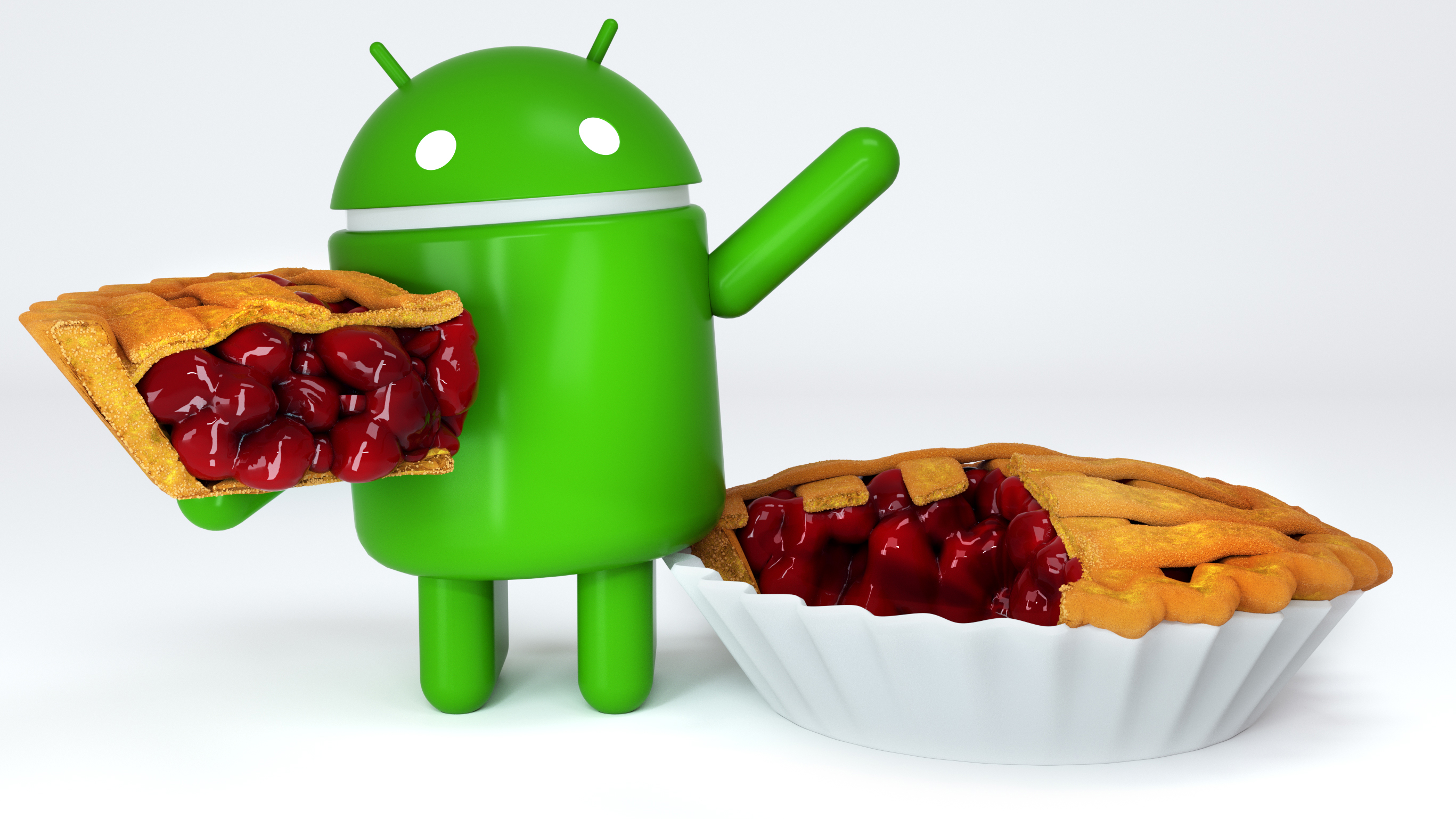
Update: We've updated the list of phones that can upgrade to Android Pie, along with when other phones are expected to get the update.
Google's Android Pie update launched in late 2018 with a host of improvements to make your phone more personal, more efficient, and overall easier to use - all with a free upgrade to your operating system.
After lots of testing, we've found Android Pie to be a splendid feature-filled operating system update with that will have you asking: when is the Android 9 Pie release date for my phone?
Good news for some of you: the final software is out on plenty of new flagship phones from Google, Essential, Samsung, Nokia, LG, Sony, Xiaomi, Huawei and more. We've got a full list below, which we will continue to add.
The truth is the Android Pie release date will be staggered for many people, with manufacturers (and in the US, the carriers) required to tweak the software before their phones can enjoy the free upgrade. Many phones were updated by the end of 2018, but owners of some phones will have to wait later into 2019.
Expect noticable design changes, helpful shortcuts, and a big focus on AI through adaptive settings. We have a full Android Pie features list below, too, along with a phones list detailing which devices are compatible.
Here's what you'll see with Android Pie when it comes to your phone.
Sign up for breaking news, reviews, opinion, top tech deals, and more.
Cut to the chase
- What is Android Pie? It's Android 9, the newest version of Android
- When can get you Android Pie? Right now on select phones, 2018-2019 for others
- How much will Android Pie cost? It will be a free update

Android Pie release date
This... is complicated.
Android Pie did indeed start rolling out in August 2018 as a free over-the-air update. You should see it in the software update menu by now...if your phone is ready to update (for most Android phones, upgrade by navigating to Settings > System > System Update). While many phones have been able to update to Android 9, it still hasn't reached some older phones.
As expected, Google Pixel phones were the first to get the update, and all can be upgraded. The Essential Phone also got Android 9 Pie when it launched. Since then, others - starting with flagship models from the big phonemakers - have gotten the greenlight to update.
And it should be noted that phones that have come out past Android Pie's launch date generally support the new OS out of the box – especially those that are launching in 2019. The big question is when older phones are getting updated.
Here's which phones have already been updated, divvied up by manufacturer.
Asus:
- Zenfone Max Pro (M2)
- Zenfone Max Pro (M1)
- ROG phone
- Zenfone 5/5Z
- Zenfone Max M1
- Zenfone Max M2
Essential:
- Essential Phone
Google:
- Google Pixel 3/3 XL
- Google Pixel 2/2 XL
- Google Pixel 1/1 XL
HMD/Nokia:
- Nokia 9 Pureview
- Nokia 8/8 Sirocco
- Nokia 7.1/7 Plus
- Nokia 6/6.1
- Nokia 5/5.1/5.1 Plus
- Nokia 3.1/3.1 Plus
- Nokia 2.1 (Go edition)
Honor:
- Honor View 20
- Honor View 10
- Honor 20i
- Honor 10/10 Lite/10i
- Honor 8X
- Honor 8 Pro/8a Pro
- Honor Play 8a
- Honor Magic 2/2 3D
HTC:
- HTC U11 Life (in Europe)
Huawei:
- Huawei P30/P30 Pro
- Huawei Mate 20/Mate 20 Pro/Mate 20 X
- Huawei Mate 20 RS Porsche
- Huawei P20/P20 Pro
- Huawei Mate 10 Pro
- Huawei Mate 9 Porsche (in China)
- Huawei P10
- Huawei Nova 4e
- Huawei Nova 3
- Huawei P Smart 2019/P Smart Plus 2019
- Huawei Enjoy 9e/9s
LG:
- LG G8
- LG G7 One
Moto:
- Moto Z3/Play
- Moto G6/G6 Play/G6 Plus
- Moto One/One Power
OnePlus:
- OnePlus 6/6T/6T McLaren
- OnePlus 5/5T
Oppo:
- F11 Pro
- Oppo R15
- Reno
Samsung:
- Galaxy S10/S10e/S10 Plus
- Galaxy S9/S9 Plus/
- Galaxy S8
- Galaxy Note 9
- Galaxy Note 8
- Galaxy Note FE
- Galaxy A8/A8 Plus/A8 Star
- Galaxy A10/A20/A30/A40/A50/A60/A80
- Galaxy A8s
Sony:
- Xperia 1
- Xperia 10/10 Plus
- Xperia XZ3
- Xperia XZ2/XZ2 Premium/XZ2 Compact
- Xperia XZ Premium/XZ1/XZ1 Compact
Vivo:
- Vivo V15/V15 Pro
- Vivo X27/X27 Pro
- Vivo iQOO
- Vivo S1
- Vivo X21/X21UD
- Vivo Nex S/Nex A
- Vivo NEX dual display
Xiaomi:
- Xiaomi Black Shark 2
- Xiaomi Mi 9/Mi 9 Explorer/Mi 9 SE
- Xiaomi Mi 8 Lite
- Xiaomi Mi A2/Mi A2 Lite
- Xiaomi Mi A1
- Xiaomi Mi Max 3
- Xiaomi Mi Mix 3
- Xiaomi Mi Mix 2S
- Xiaomi Mi Play
- Xiaomi Pocophone F1
- Xiaomi Redmi 7
- Xiaomi Note 7/Note 7 Pro
ZTE:
- Nubia Red Magic Mars
- Blade V10
Android Pie release date: soon (2019)
While some manufacturers have announced launch dates when their phones are updated, that date might be pushed back later than was initially projected. This is typical of Android updates, especially in the US where carrier approval is required.
Asus:
- Zenfone 5 Lite (5Q) (expected Q1 2019)
- Zenfone 4 pro (expected Q2 2019)
- Zenfone 4 (expected Q2 2019)
BlackBerry:
- BlackBerry Key2 (expected Q1 2019)
- BlackBerry Evolve X (expected Q2 2019)
- BlackBerry Evolve (expected Q3 2019)
Huawei:
- P20 Lite/Nova 3e
LG:
- LG G7
- LG V40
- LG V35
- LG V30S
Moto:
- G6/G6 Play/G6 Plus (pending carrier support)
- Z2 Play/Z2 Force (pending carrier support)
- Moto X4 Android One (pending carrier support)
OnePlus:
- 3/3T (currently in beta)
Samsung:
- Galaxy A6
- Galaxy A6+/A7/A9 (2018 models - currently rolling out)
- Galaxy J8 (currently rolling out)
- Galaxy A8 Plus (currently rolling out)
- Galaxy J6 (May 2019)
Sony:
- Xperia XA2/XA2 Ultra (currently rolling out)
Xiaomi:
- Xiaomi Mi Mix 2 (planned)
- Xiaomi Mi Note 3 (planned)
On to the major Android Pie features.
Adaptive battery life
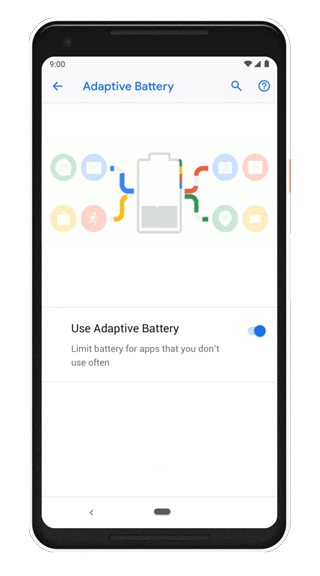
Android Pie has been designed to give you a more consistent battery by using on-device machine learning to figure out which apps you'll use in the next few hours and which you won't use until later, if at all today.
With 30% reeducation in CPU app wake-ups for apps, adaptive battery helped us eke out a few more hours of device use when we tested it. And now the software is final, so it should be even better.
Google partnered with Deep Mind to refine its deep learning algorithms and it's having a big effect on Android battery life, according to Dave Burke, Google's VP of Engineering for Android. Adaptive brightness is the most meaningful new Android Pe feature in our own deep minds.
Adaptive brightness
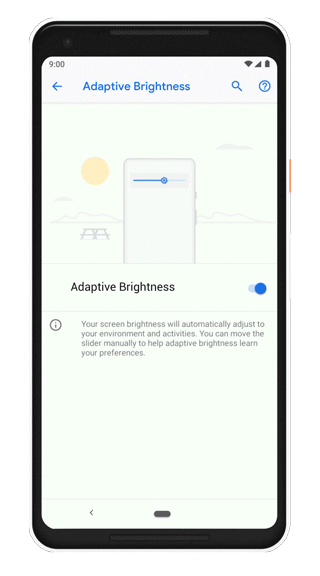
Current auto-brightness settings aren't good enough, according to Google, and that's why it's giving phone makers a more power efficient way to calibrate phone screen brightness based on both the environment and learned behavior.
Google calls this adaptive brightness and claims that 50% of users who tested this Android Pie feature have stopped manually adjusting the brightness because of it. Even if you still reach to manually adjust the brightness, overall, you should be doing it less. That's what we experiencing when running Android Pie on a Pixel 2.
App actions
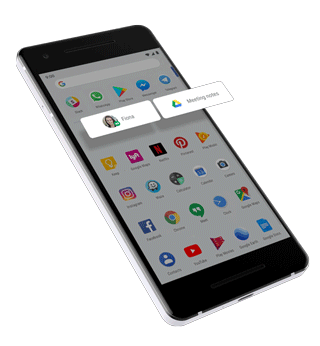
Google is inserting more prediction tools into its app drawer. Previously, you'd see a top row of predicted apps, normally based on your usage history. That was helpful.
Android Pie goes a step further with app actions that predict what you'll do next, and these shortcuts sit in a row right underneath the predicted app icons. This boils down to shortcuts for calls, or a run routine based on the fact that you just plugged in headphones and run every day at this time with an app like Strava. It's like Android Pie is reading your mind.
App slices
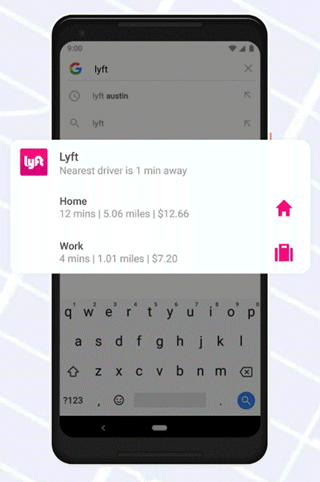
You won't see app slices until later this year, but Google has issued an API to developers to create more shortcuts around its operating system interface. This is starting in search, of course (after all, this is Google, we're talking about).
The best example at Google IO was with the ride-hailing app, Lyft. Searching for 'Lyft' will provide the app as an answer, but also shortcuts to your top destinations, like work and home, each with a price already listed. It's saving you from having to go into the app menus in order to select these options.
App slices via the search bar can extend to Google Photos, too. If you look up Hawaii, you'll see photos from a vacation, for example, and checking into a hotel may soon be easier when you look up your hotel name. Instead of having to wade through the clunky third-party app, you may be able to just select 'check in'.
Android Pie navigation changes
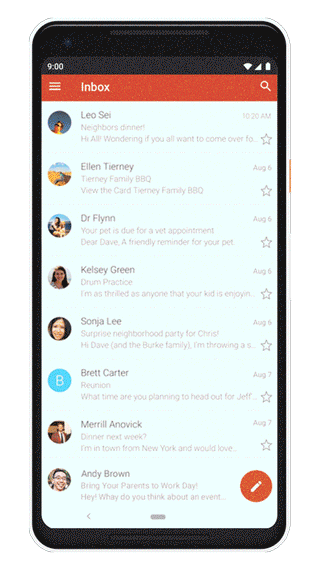
Android Pie has a new system navigation interface in order to make multi-tasking easier to understand, with a single clean home button. It's very much an iPhone X horizontal bar to replace the typical home and recent buttons.
This is part of Google's plan to make the UI simpler and adapt to the all-screen phone designs out there. It's more approachable to new users, according Google.
You can swipe up from the bottom anywhere in the operating system to see recent open apps as well as five predicted app at the bottom of the screen to save you time. Swiping up a second time and you'll see your app drawer. With this one-two swipe gesture, Google has essentially combined the all-apps and overview spaces gesture into one.
You can do one better than Apple's iPhone interface. Android Pie will let you scroll through all of your apps very quickly by sliding right and left with the horizontal bar at the bottom. It's like a video you're scrubbing through, but for app selection.
Form our experience, it takes time to get used to the navigation changes (as do almost all software changes), but retraining your brain for Android Pie is worth it in the end. Everything feels intuitive.
Volume slider and screen rotation fixed
The volume slider has moved again, and this time it's off to the right side near the volume rocker. That makes sense, but it does more than just get a new home.
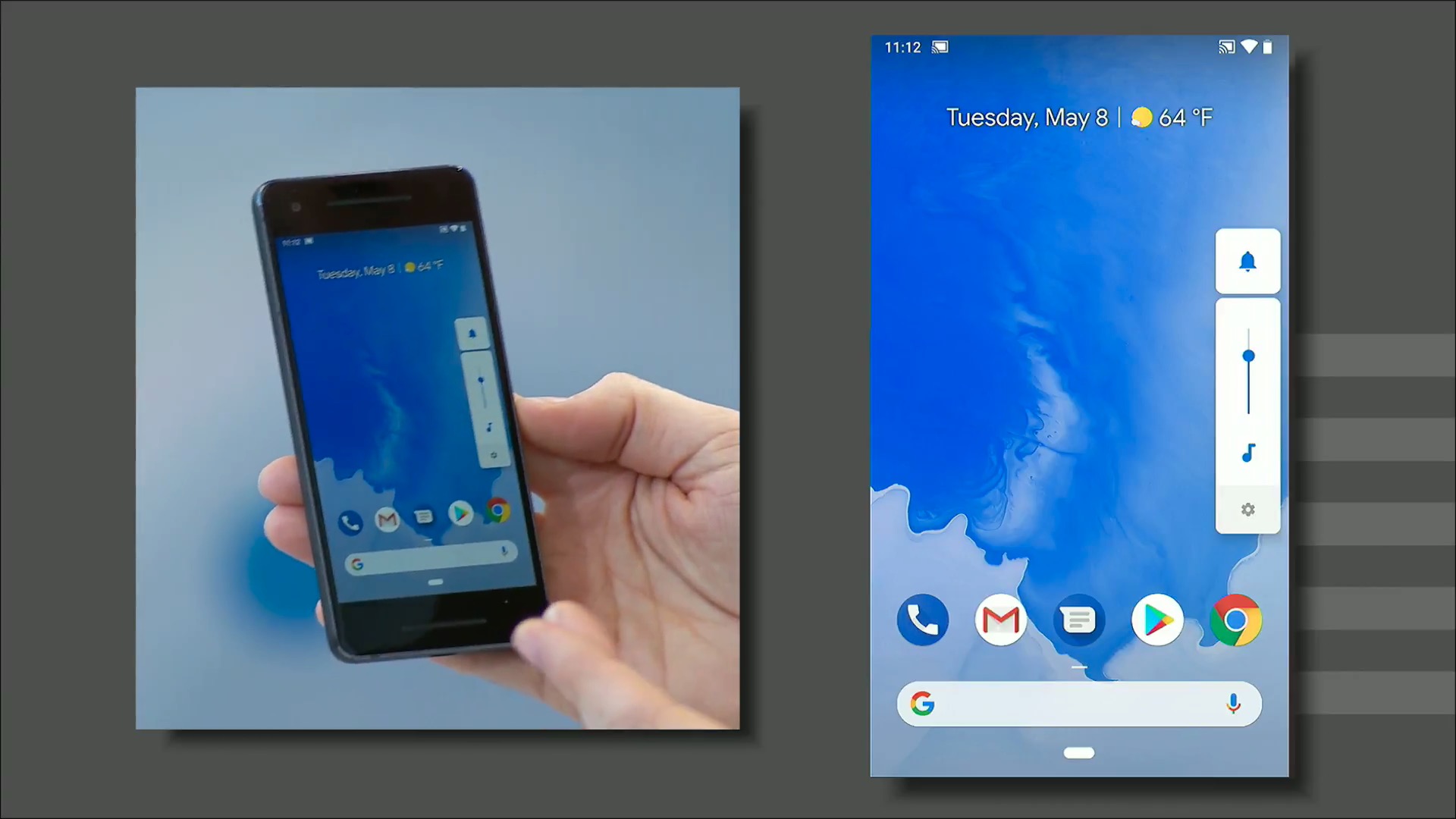
Pressing the volume keys will now adjust the media volume instead of sometimes (but you're not quite sure when) controlling the ringer volume. The ringer can be turned on and off through a software toggle button when you adjust the volume. Your reaction may be like ours: "Why wasn't it always this way?!"
You can also now manually control screen orientation. This is done via a pop-up icon that appears when you rotate the screen. You won't have to rely on the phone to (often mistakenly) rotate the screen for you.
Android Pie 'Digital Wellbeing'
It's no secret that we use our smartphones too much, and you probably do, too (you are on a technology website, after all). But how much time?
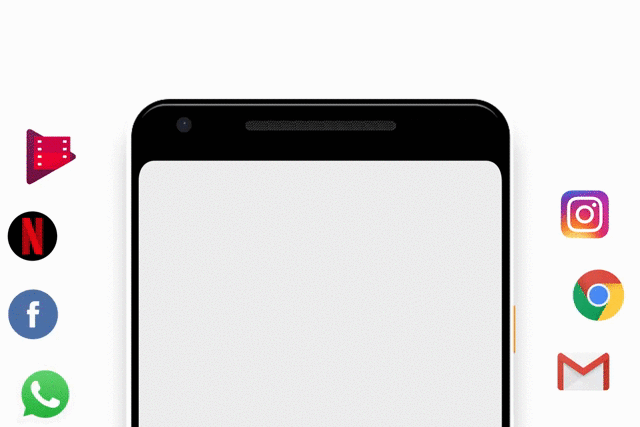

Like a Fitbit tracker gauges for activity and informs to motivate you, Google's Android Pie update includes a 'Digital Wellbeing' dashboard to monitor how long you've been using your phone and specific apps.
Digital Wellbeing is supposed to aid you in understanding what you're spending too much time on so that you can adjust your behavior.
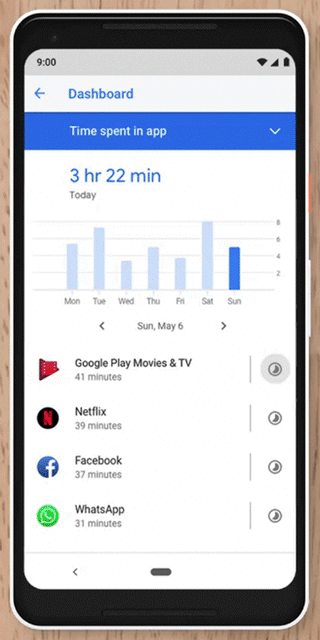
It even comes with an app timer and to send you notifications when you cross a self-imposed threshold, and a new Shush feature is launching as a Do Not Disturb shortcut when you turn your phone over on its front face. In addition to silencing alarms, it won't even display visual notifications.
Think of Google as eliminating both audible and visual noise from your life when these modes are enabled.
Digital Wellbeing is one of the biggest, most fundamental new features in Android Pie and we've already taken a deep-dive into it, explaining it in detail and giving an early verdict on it.
Given that it's still in beta we were fairly impressed, but noted that it needs a degree of pro-activeness to get much from it and that it could really do with parental controls. You can find our full thoughts on it here:
Making room for more Android notch displays
Android Pie makes room for notched displays, and we've seen a lot of them on new Android phones in the last few months – pretty much everyone but Samsung.
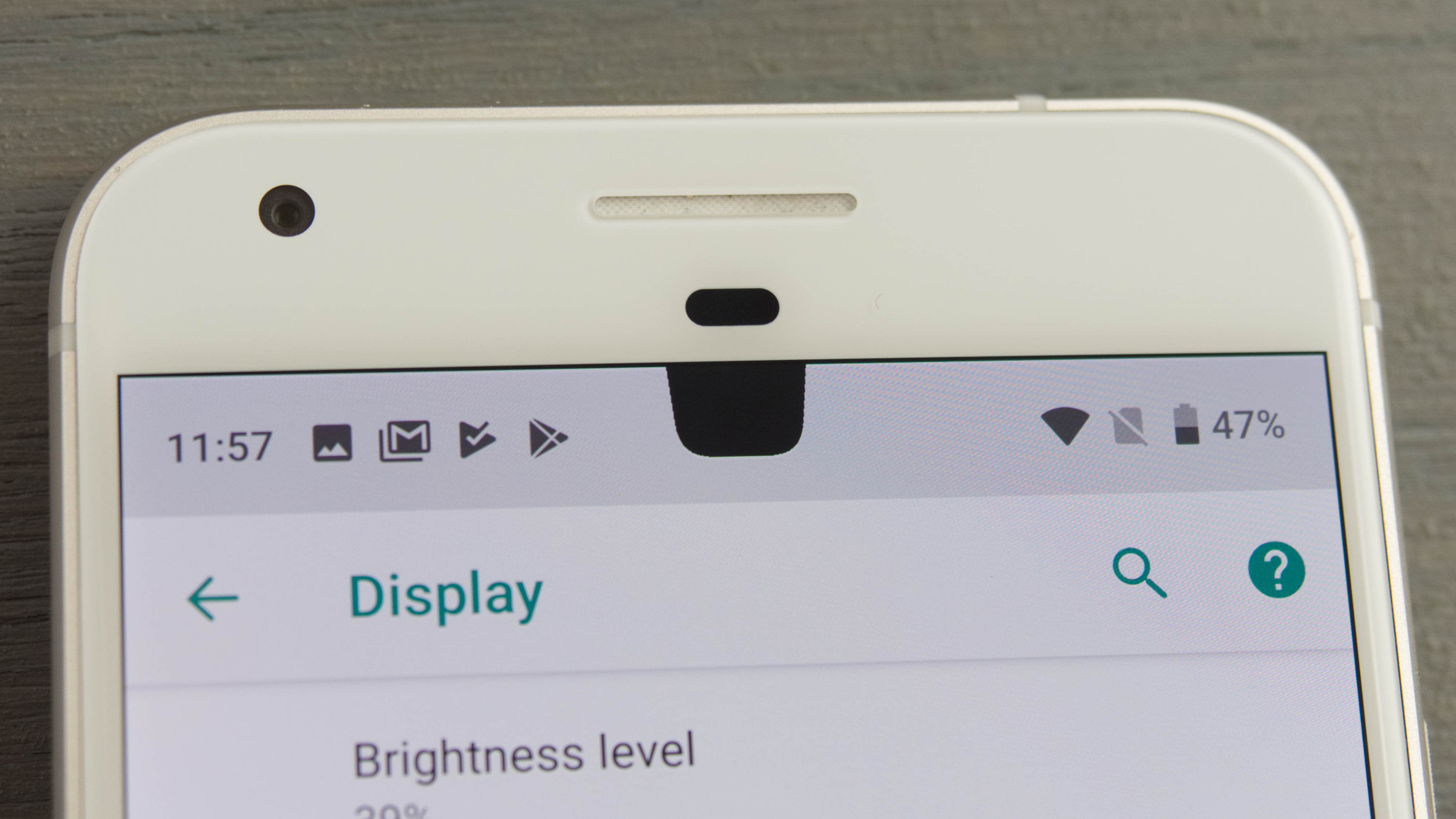
Small notch
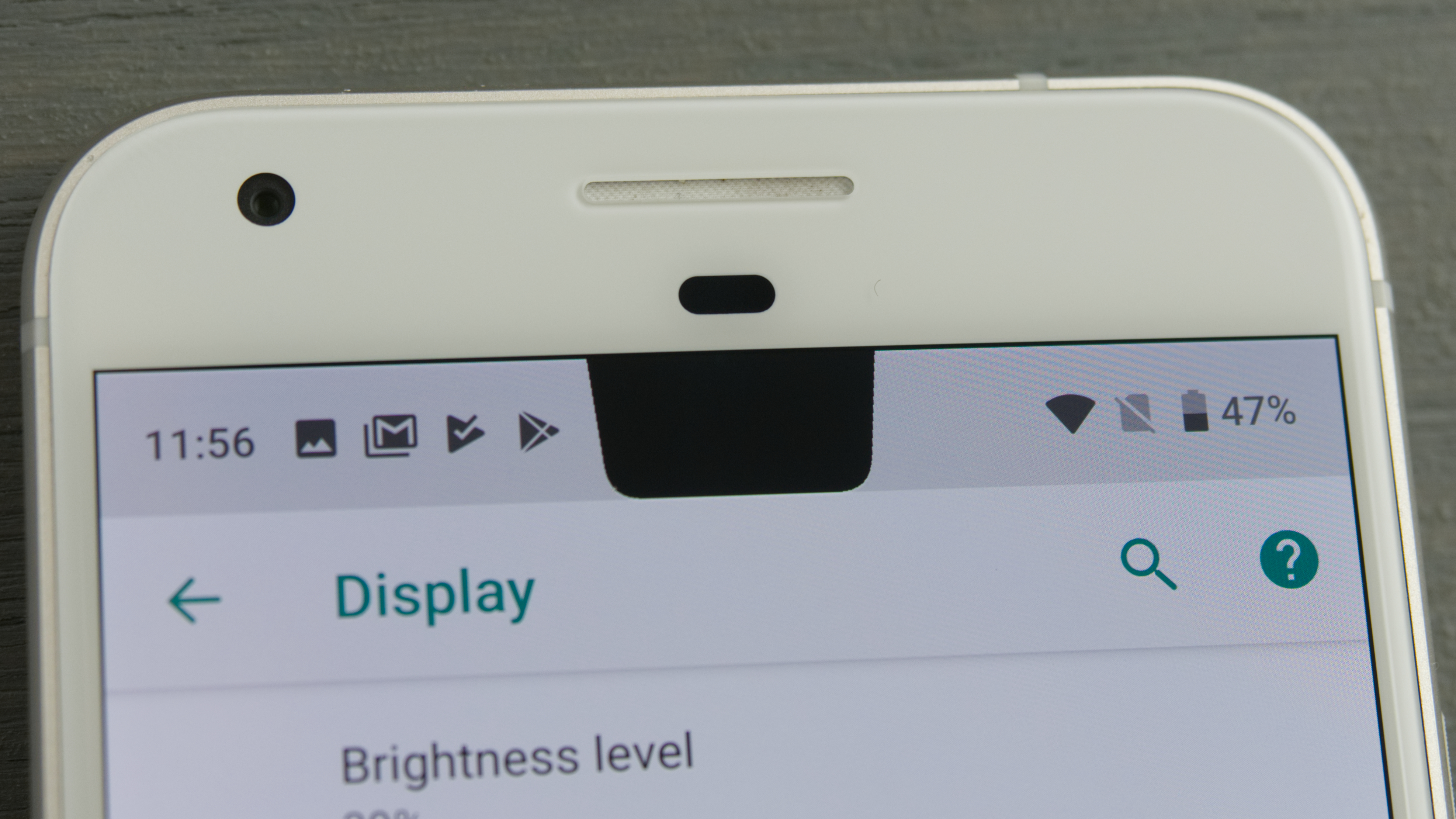
Medium notch
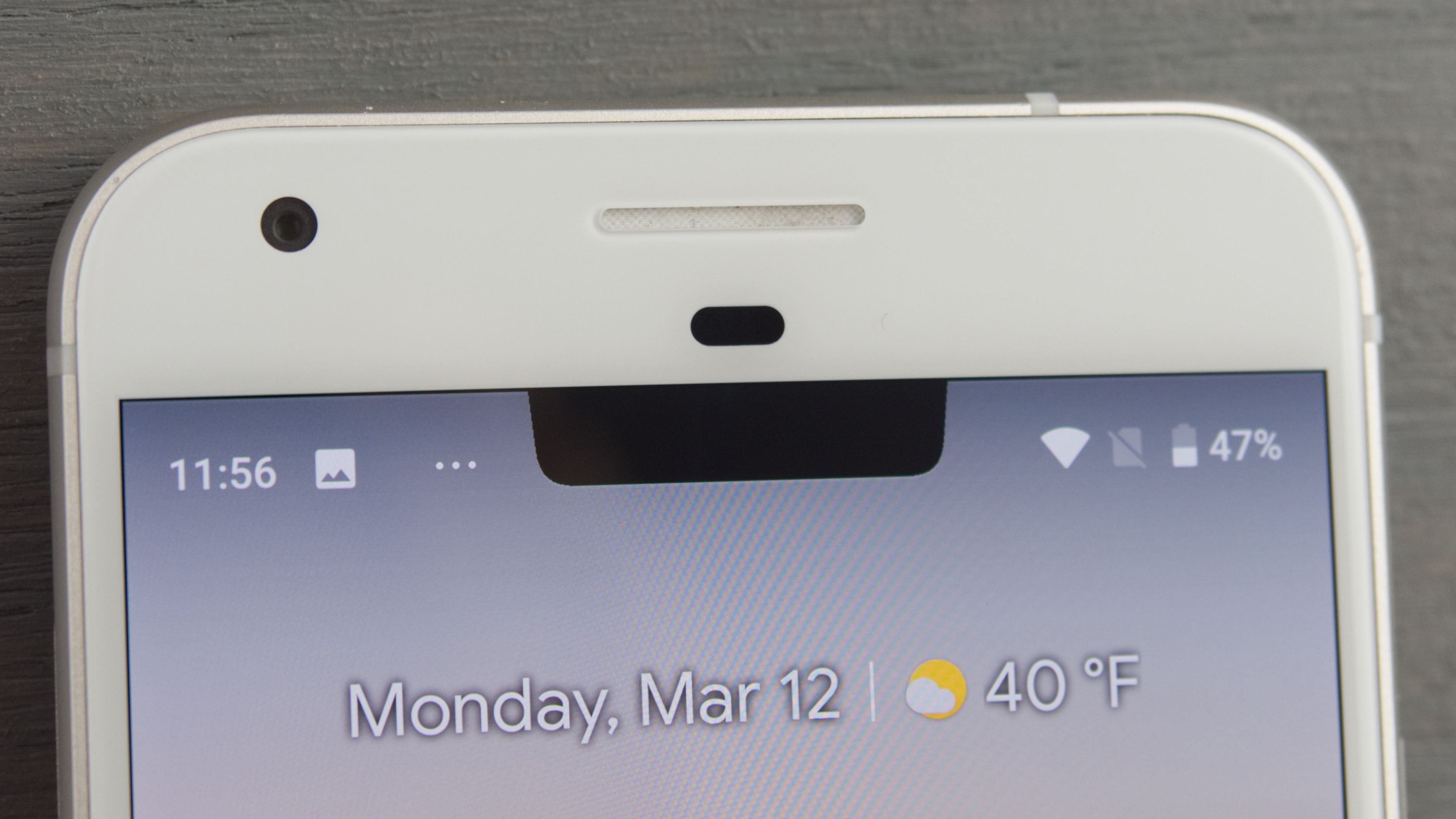
iPhone X-sized notch
The use of a notch cutout means that some of Android's standard interface staples have shifted.
Looking for the time? It's now on the top left corner of the screen. App notification icons pile next to it, which could get dicey if A.) you use a lot of apps, or B.) your next Android phone has a notch (Google has planned ahead for this, thankfully.)

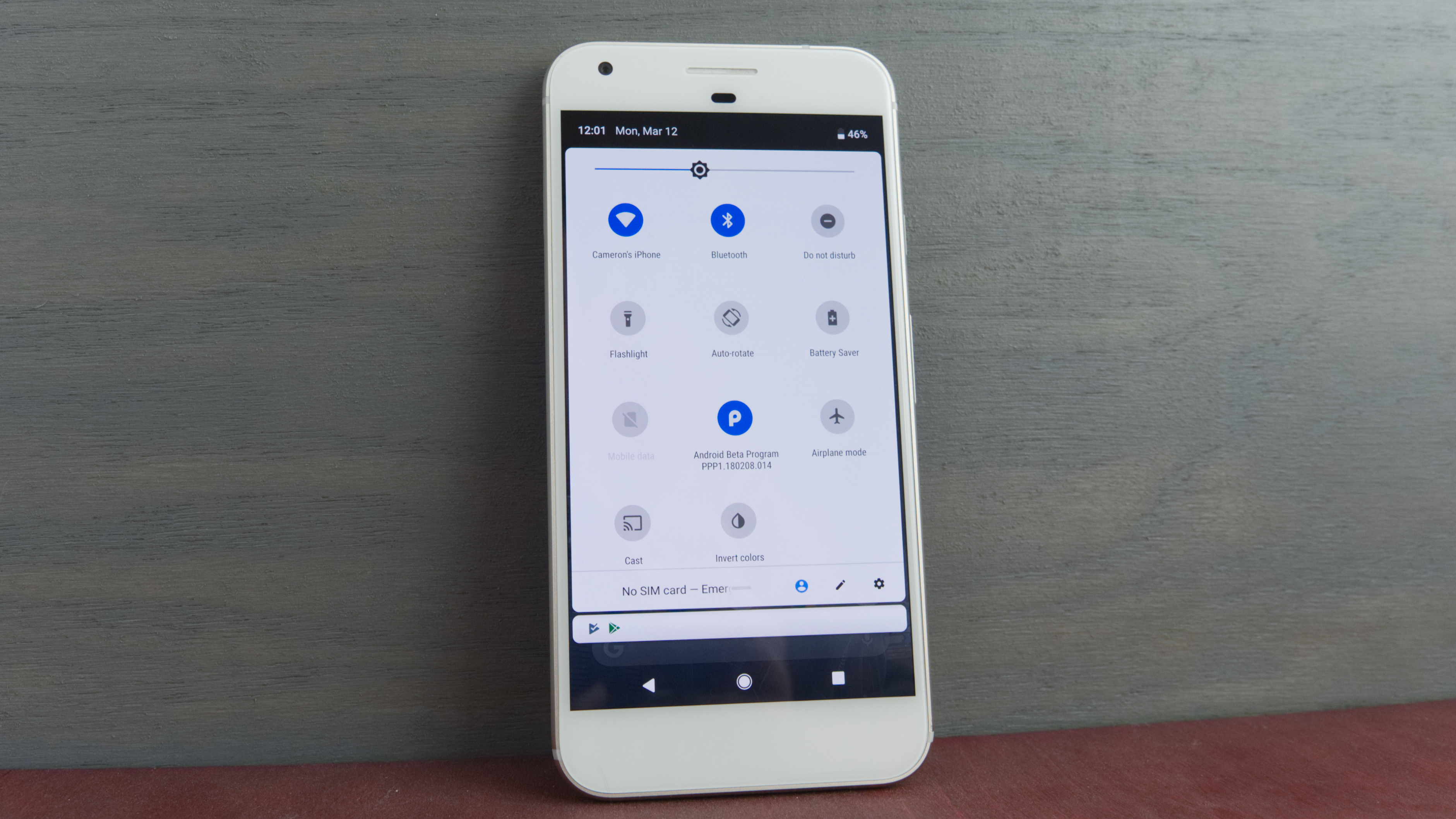
Some other design changes we noticed: Text is more sharp, there's generally more color in the menus, transition animations have been touched up, and some stuff has been moved around. It looks and feels fresh, even in this very early software build.
The Pixel Launcher now has a rounded-off edge, matching the look of notification windows that you see when you wake up your phone. This is obviously a minor touch, but it plays into the overall look that Google is going for with Android Pie.
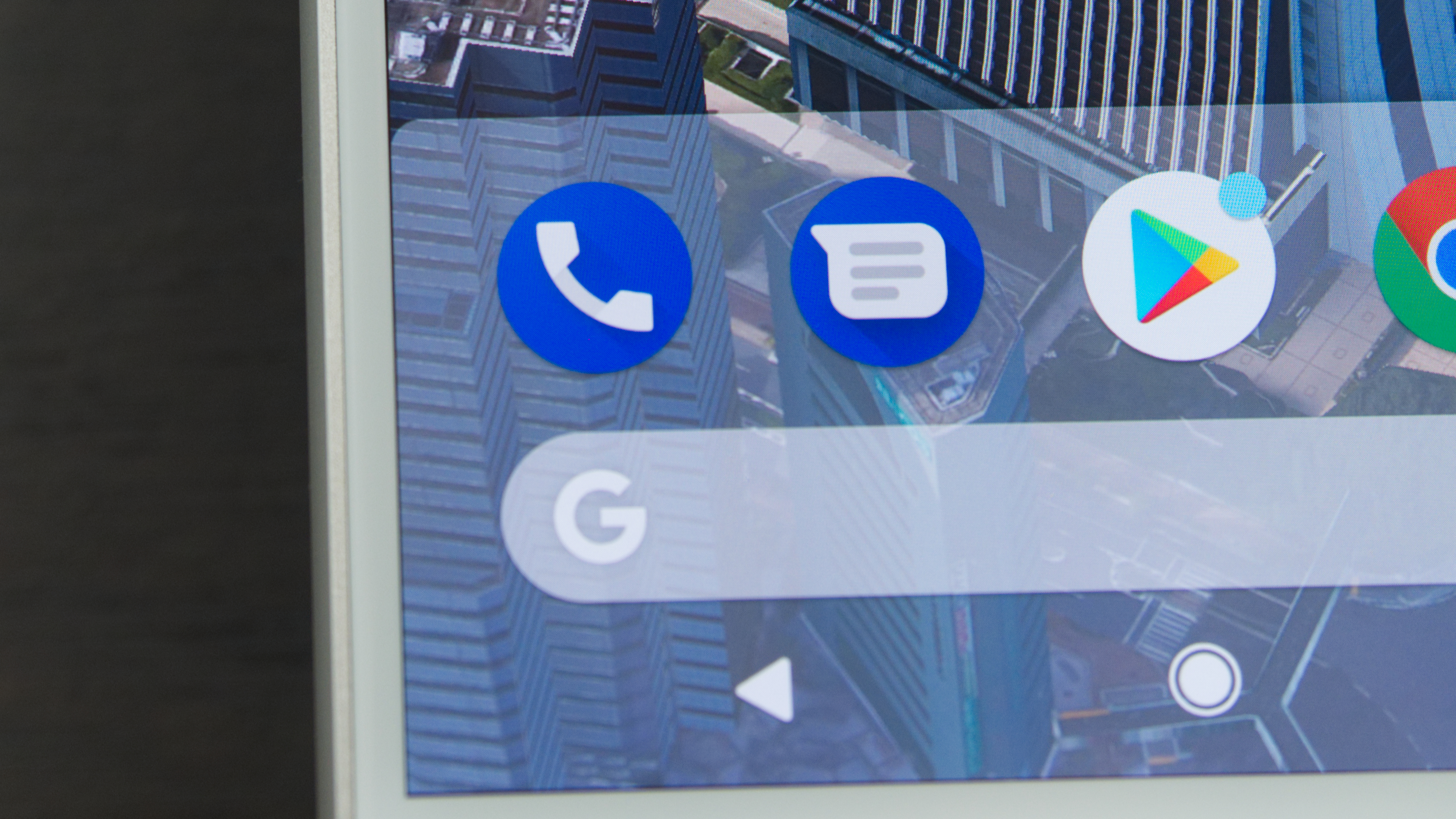
Ambient Display has been overhauled, at least compared to what came before it on Pixel XL and what currently exists on the latest Pixel 2 XL Oreo software. The date and day of week no longer display underneath the time, but it still displays app notification icons.
The biggest change here is that down at the screen's bottom, it displays the battery percentage, so that you don't have to wake it to know whether you need to plug in or not. We look forward to Google making more updates to Ambient Display as the dev preview continues.
- We also have a wish list for Wear OS

